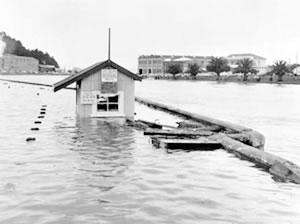Tsunami How
GeoNet uses seismic sensors able to characterise potential tsunami-generating earthquakes occurring off the New Zealand coast. It also operates or shares tsunami gauges across the greater New Zealand region to observe any tsunami that may have been generated.
New Zealand National Tsunami Warning System
The National Emergency Management Agency (NEMA) is responsible for the dissemination of national official tsunami notifications in New Zealand. With technical support from GNS Science, NEMA assesses all messages received from the Pacific Tsunami Warning Center (PTWC, based in Honolulu, Hawaii) to determine the threat for New Zealand. Official tsunami notifications for New Zealand are disseminated by NEMA via the National Warning System on a 24/7 basis.
GeoNet and Tsunami
The New Zealand seismograph network includes long-period seismic sensors which are able to detect potential tsunami-generating earthquakes occurring off the New Zealand coast. Analysis of the seismic waves can determine whether the event is likely to have disturbed the sea floor and caused a tsunami, allowing warnings to be issued by civil agencies. Such warnings will frequently come too late for people on the affected coast, but they will still be timely alerts for the initiation of any emergency response.
Tsunami gauges have been installed around the New Zealand coast and on offshore islands (see the tsunami network map). Live feeds of the tsunami gauges can be found on our Tsunami Monitoring pages. They transmit the relative sea level data in real time to the GeoNet Data Management Centre. Once again, for tsunami generated close to the New Zealand coast these are unable to provide a basis for a timely warning system for all, but they can provide confirmation that a tsunami has been generated.

